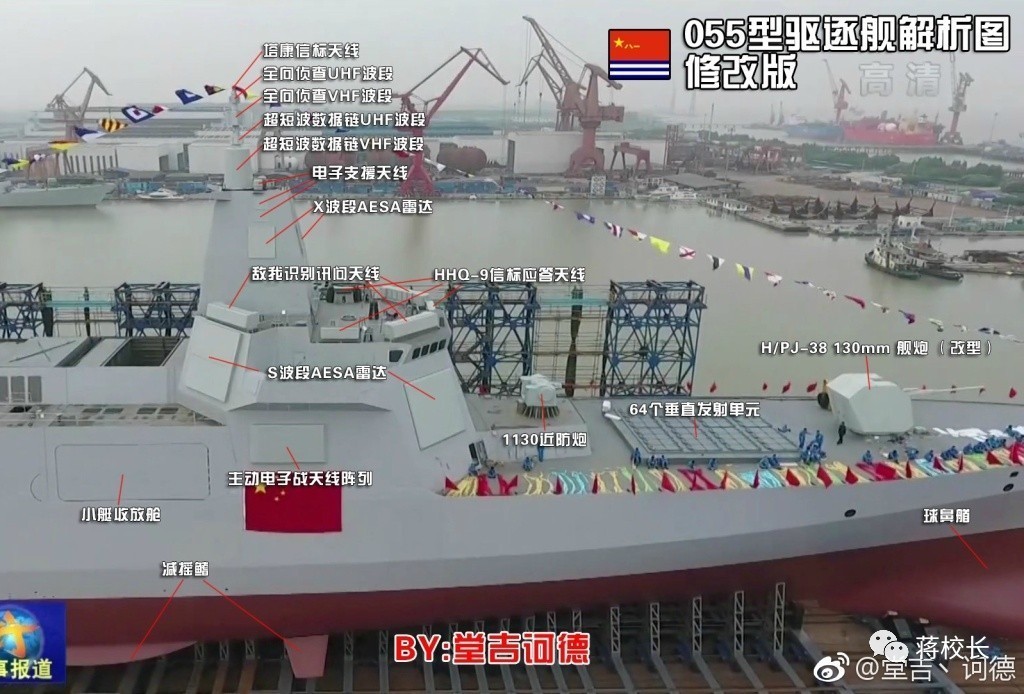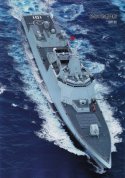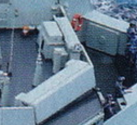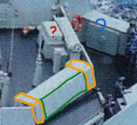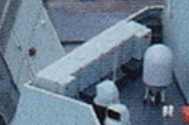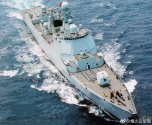The ones facing 12,3,6,9 look in width comparable to the panels on the Type 052D. I would wager that these are the IFF. If they worked on the Type 052D, they should work on the Type 055.
An argument I've heard from Henri K in favor of the larger panels being IFF is the reportedly significantly higher performance of the Type 346B radar. On the face of it, that seems sound. However, I see two problems with that.
1. IFF typically operate at much longer wavelengths: the USN's IFF operates at 1030-1090 MHz. That's 6-8 times lower frequency compared to C-band used to communicate with the HQ-9 missiles. I will assume that PLAN's IFF similarly operates at comparable UHF frequencies (do you have more precise data?): 1GHz UFF vs 7 GHz comm link.
Even in typical clear weather, we are looking at 2-5 times more specific signal attenuation at 7GHz versus 1 GHz (db/km) (exact numbers depend on water vapor content in the air). If we add moderate rain into the picture, the ratio can widen to over 100 times the difference, with fog and clouds to 1000 and in heavy rain to over 10,000 times (for the duration of the atmospheric disturbance).
Take a look at these graphs:
Let's assume that HQ-9Bs have a range of about 250km. In perfect weather conditions, the Type 346B should have an instrumented range of at least 250*3.5=875km to justify using a larger antenna for IFF. However, against a target flying at 10km its theoretical radar horizon is roughly 415km. Even against a target flying at 15km, it's still just 500km.
2. If those are the IFF, where are the C-band missile comm antennas? Still embedded in the Type 346B radar?

